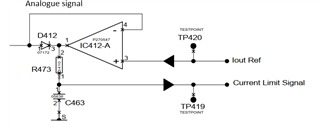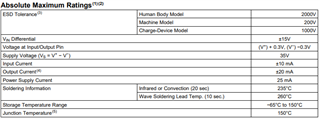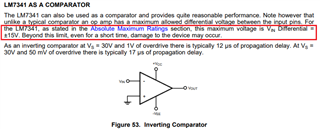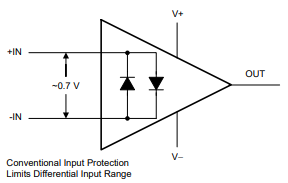Other Parts Discussed in Thread: TLV1811, TLV1841, TLV1851
Tool/software:
Will the input bias current increase when the LM7341 is used as comparator? The differential voltage between the inputs is 1-4V and well within the supply voltages.
Best regards
Kolbein Blakar





